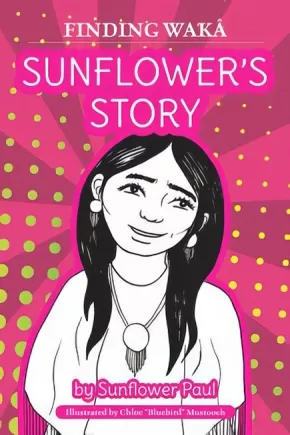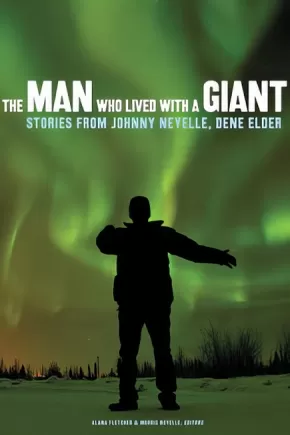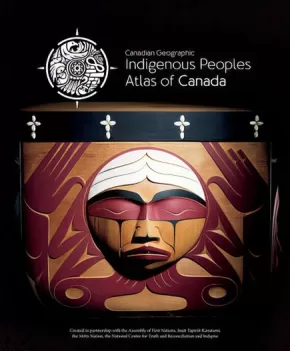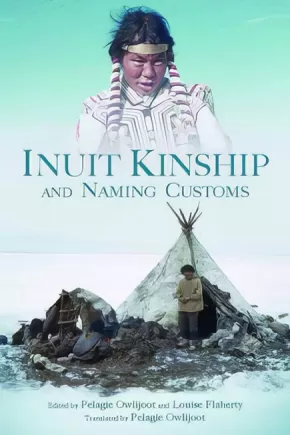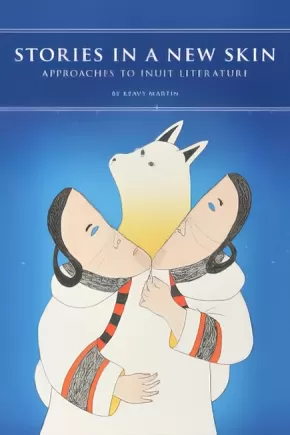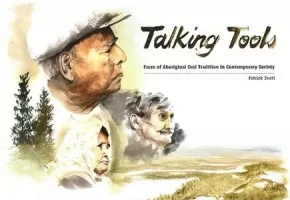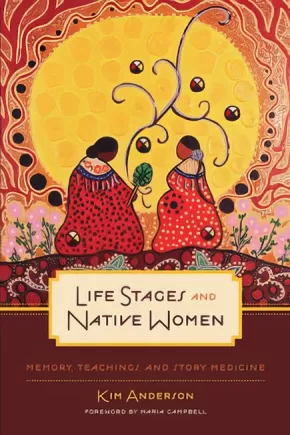
Customs and Traditions
16
-
24
of
24 Results;
Sort By
Go To
of 2
Mother Earth Plants for Health & Beauty: Indigenous Plants, Traditions, and Recipes
$24.95
Format:
Paperback
Text Content Territories:
Indigenous Canadian; Métis;
ISBN / Barcode: 9781926696645
Synopsis:
Synopsis:
The recipes and traditions found in this book reflect the culture and the knowledge of the Medicine Wheel, featuring 26 edible and medicinal plants that you can gather in nature as Carrie and her grandmother did.
Create a luxurious and natural beauty regime by crafting your own lotions, soaps and teas from all-natural ingredients. From stress-busting teas and bath bombs to skin-smoothing lotions and creams, get vibrant skin and a healthy glow with Carrie’s creations based on her grandmother’s traditional teachings.
"I remember gathering plants and berries with my grandmother while she shared her stories and her deep understanding of traditional plants and their uses. My grandmother healed us with her medicinal plants—everything from pink eye, sore throats, stomach ailments, aches and pains, and infections. She’d make us these beautiful, healing teas." –Carrie
Additional Information
144 pages | 6.00" x 7.75"
Sunflower's Story
$10.95
Format:
Paperback
Text Content Territories:
Indigenous Canadian;
ISBN / Barcode: 9781926696843
Synopsis:
Synopsis:
A personal account of a young Indigenous girl who experiences intolerance, a sense of not belonging and family struggles. She learns from her grandfather the traditional ways of ceremony and fasting to go beyond the needs of the body to where she begins to know her higher self.
Educator & Series Information
Recommended for ages 13 to 18.
This book is part of the Finding Waka series.
Keywords / Themes: Acceptance, Anxiety, Ceremony, Family, Fasting, Growth, Healing, Spirituality, Racism, Intolerance.
Additional Information
52 pages | 6.00" x 9.00" | Paperback
The Man Who Lived with a Giant: Stories from Johnny Neyelle, Dene Elder
$27.99
Editors:
Format:
Paperback
Text Content Territories:
Indigenous Canadian; First Nations; Dene;
ISBN / Barcode: 9781772124088
Synopsis:
Synopsis:
Our parents always taught us well. They told us to look on the good side of life and to accept what has to happen.
The Man Who Lived with a Giant presents traditional and personal stories told by Johnny Neyelle, a respected Dene storyteller and Elder from Déline, Northwest Territories. Johnny Neyelle used storytelling to teach Dene youth and others to understand and celebrate Dene traditions and identities. Johnny’s entertaining voice makes his stories accessible to readers young and old, and his wisdom reinforces the right way to live: in harmony with people and places. Storytelling forms the core of Dene knowledge-keeping. A volume dedicated to making Dene culture strong, The Man Who Lived with a Giant is a vital book for Dene readers, researchers working with Indigenous cultures and oral histories, and scholars preserving Elders’ stories. Even more, it is a book for the Dene people of today and tomorrow.
Additional Information
152 pages | 6.00" x 9.00"
Indigenous Peoples Atlas of Canada
$99.99
Format:
Hardcover
Text Content Territories:
Indigenous Canadian; Métis; Inuit; First Nations;
ISBN / Barcode: 9780986751622
Synopsis:
Synopsis:
Indigenous perspectives much older than the nation itself shared through maps, artwork, history and culture.
The Royal Canadian Geographical Society, in partnership with Canada's national Indigenous organizations, has created a groundbreaking four-volume atlas that shares the experiences, perspectives, and histories of First Nations, Inuit and Métis peoples. It's an ambitious and unprecedented project inspired by the Truth and Reconciliation Commission's Calls to Action. Exploring themes of language, demographics, economy, environment and culture, with in-depth coverage of treaties and residential schools, these are stories of Canada's Indigenous Peoples, told in detailed maps and rich narratives.
This extraordinary project offers Canada a step on the path toward understanding.
The volumes contain more than 48 pages of reference maps, content from more than 50 Indigenous writers; hundreds of historical and contemporary photographs and a glossary of Indigenous terms, timelines, map of Indigenous languages, and frequently asked questions. All packaged together in a beautifully designed protective slipcase.
Educator Information
Recommended for ages 13+.
The Indigenous Peoples Atlas of Canada includes a four volume print atlas, an online atlas, an app, and more!
Additional Information
322 pages | 10.50" x 12.87"
Let Me See Your Fancy Steps: Story of a Métis Dance Caller
$25.00
Text Content Territories:
Indigenous Canadian; Métis;
ISBN / Barcode: 978-1-926795-83-6
Synopsis:
Synopsis:
“The Gabriel Dumont Institute Press is pleased to be able to preserve and share Jeanne Pelletier’s work and life story through Let Me See Your Fancy Steps—Story of a Métis Dance Caller. The Story of Jeanne Pelletier as told to Sylvie Sara Roy and Wilfred Burton. Jeanne’s achievement as the first female Métis dance caller is, of course, about Métis dance, but it is also about the determination of a young Métis girl who achieves her dream to become a dance caller during a time when this was only done by men.”
This resource includes dance calls for 16 dances and is accompanied by the instructional DVD All My Relations which features dance company V’ni Dansi which is led by renowned dancer and artistic director, Yvonne Chartrand.
Reviews
"The recounting of Jeanne’s work is supplemented throughout the book by testimonials of her former dance students and community members, all of whom praise the dance caller for the substantial impact that she’s had both on their personal lives, as well as the academic and social climates of the Métis community in Saskatchewan. As a Métis myself, I feel lost at times, as if my culture is fuzzy or foreign to me. Reading the life experiences, knowledge, and not to mention the wealth of Métis Jig steps found in this book gave me an overwhelming sense of peace to see research of this caliber and this level of care being invested in my culture. I would highly recommend this book to anyone with an interest in Métis culture and the significance that the jig has to the culture. Anyone who has seen the Métis Jig performed live knows that it is a beautiful and awe-inspiring dance, but after reading Jeanne’s explanations of the cultural significance of the dances, I will now appreciate the dance that much more as a story and celebration of my culture. It is also worth mentioning that entire dance sequences are written out to follow with Jeanne’s notes, and the book includes an instructional DVD." - Ben Charles for SaskBook Reviews
Educator Information
Recommended by Gabriel Dumont Institute for Secondary/Post Secondary/Adult.
Includes a DVD.
Recommended in the Canadian Indigenous Books for Schools 2019-2020 resource list as being useful for grades 5-12 with regard to these subjects: English Language Arts, Physical Education, Social Studies, Teacher Resource.
Inuit Kinship and Naming Customs (1 in stock, in reprint)
$19.95
Format:
Paperback
Text Content Territories:
Indigenous Canadian; Inuit;
ISBN / Barcode: 9781927095713
Synopsis:
Synopsis:
Traditionally, Inuit do not call each other by their given names. Instead, they refer to each other using a system of kinship and family terms, known as tuqurausiit (turk-thlo-raw-seet). Calling each other by kinship terms is a way to show respect and foster closeness within families. Children were named after their elders and ancestors, ensuring a long and healthy life.
As more and more Inuit refer to each other by their English first names, rather than their traditional kinship terms, the tradition of tuqurausiit is slowly disappearing. This book presents interviews with four Inuit elders from Baffin Region, Nunavut, about how names were chosen, the importance of using kinship terms, and how the practice of tuqurausiit has changed over the years. Inuit Kinship and Naming Customs helps to preserve the knowledge of this tradition for younger generations, both Inuit and non-Inuit.
Additional Information
|
Stories in a New Skin: Approaches to Inuit Literature
$27.95
Format:
Paperback
Text Content Territories:
Indigenous Canadian; Inuit;
ISBN / Barcode: 9780887557361
Synopsis:
Synopsis:
In an age where southern power-holders look north and see only vacant polar landscapes, isolated communities, and exploitable resources, it is important to point out that the Inuit homeland is, in fact, united by extensive philosophical, political, and literary traditions. Stories in a New Skin is a seminal text that confirms the “national” scope of Inuit literature and introduces a model for Inuit literary criticism. Author Keavy Martin analyzes writing and storytelling from a range of genres and historical periods – the classic stories and songs of the oral tradition, life writing, oral histories, and contemporary fiction, poetry, and film – and discusses the ways in which these texts constitute a national literary tradition. She highlights characteristics of Inuit intellectual discourse, demonstrates potential approaches to the material, and introduces ways of drawing methodologies from the texts themselves.
Reviews
"Martin has listened carefully to indigenous authors and critics who have for decades argued that their literature should be analyzed on its own terms, according to tribal and community perspectives and in keeping with indigenous knowledges. While Martin is not Inuit, she has gone to great lengths to visit the Far North, learn Inuktitut, and live for periods of time among the people. This lived experience, combined with her excellent literary theoretical and analytical skills, has produced this gorgeous book. In it Martin brings new perspectives to published and oral texts. As she argues, the most appropriate and sophisticated approach to Inuit stories is to recognize how both tradition and adaptation have shaped them."— Jury's Comments, 2012 Gabrielle Roy Prize
Talking Tools: Faces of Aboriginal Oral Tradition in Contemporary Society (1 in Stock) - ON SALE!
$49.50 $65.99
Format:
Paperback
Text Content Territories:
Indigenous;
ISBN / Barcode: 9781896445595
Synopsis:
Synopsis:
Talking Tools: Faces of Aboriginal Oral Tradition in Contemporary Society explores the power of oral tradition in Aboriginal society as a foundational cultural and linguistic tool. Four distinct elements are examined: the story-keepers; the importance of practice; the emergence of new stories; and the challenges of sustainability. Finally, the emergence of new technologies and their relevance to the sustainability of the tradition and art of storytelling are discussed.
Additional Information
|
Life Stages and Native Women: Memory, Teachings, and Story Medicine
$27.95
Format:
Paperback
Text Content Territories:
Indigenous Canadian; Métis; First Nations; Cree (Nehiyawak); Anishinaabeg;
ISBN / Barcode: 9780887557262
Synopsis:
Synopsis:
A rare and inspiring guide to the health and well-being of Aboriginal women and their communities.
The process of "digging up medicines" - of rediscovering the stories of the past - serves as a powerful healing force in the decolonization and recovery of Aboriginal communities. In Life Stages and Native Women, Kim Anderson shares the teachings of fourteen elders from the Canadian prairies and Ontario to illustrate how different life stages were experienced by Métis, Cree, and Anishinaabe girls and women during the mid-twentieth century. These elders relate stories about their own lives, the experiences of girls and women of their childhood communities, and customs related to pregnancy, birth, post-natal care, infant and child care, puberty rites, gender and age-specific work roles, the distinct roles of post-menopausal women, and women's roles in managing death. Through these teachings, we learn how evolving responsibilities from infancy to adulthood shaped women's identities and place within Indigenous society, and were integral to the health and well-being of their communities. By understanding how healthy communities were created in the past, Anderson explains how this traditional knowledge can be applied toward rebuilding healthy Indigenous communities today.
Additional Information
|
Sort By
Go To
of 2




